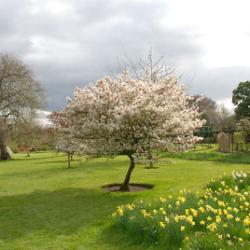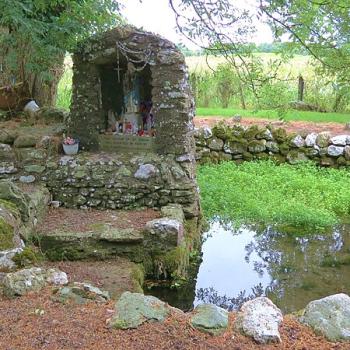All the many years we thought darkness was the default. We thought light was the precious thing, the thing that could be stolen, the thing that could be lost. And so, as the winter came, we watched the coming of the night with anxiety, hoping always for the light’s return. Never quite certain that it would come again. Oh, we knew it always had. The balance of probability and all that. But how could we really be sure?
 Every year, though, the light did return. When the spring came and the balance shifted again, we celebrated the return of the light. We sang songs of praise. We danced dances of joy for the light. We told stories of its wonder and of how it came to return to us. We painted it on paper and canvas and the walls of our most holy places. We rendered its image in cloth and glass.
Every year, though, the light did return. When the spring came and the balance shifted again, we celebrated the return of the light. We sang songs of praise. We danced dances of joy for the light. We told stories of its wonder and of how it came to return to us. We painted it on paper and canvas and the walls of our most holy places. We rendered its image in cloth and glass.
By contrast to the venerated light, the darkness was nothing but absence, loss, to be feared or hated or endured but not appreciated, not celebrated, certainly not ever hoped for and honored. Darkness was to be protected from, not to be protected. Darkness could not be lost.
But we were wrong. Oh, how wrong we were!
In our ignorance, we began to look for ways not just to endure the darkness but actively to fight it. We invented weapons to hurl at it, ways of pushing it back and calling forth more light. Darkness was not precious. Darkness was not vulnerable. And so we fought it with all our strength, convinced that the best we could do were minor successes here and there.
Our ways of hurting darkness began to tear at the fabric of the darkness itself. We could not see this of course. Our attention was elsewhere, and even if we had been looking, much of this was invisible to all but the most sensitive perception. Nevertheless, the damage was being done. Darkness was fraying at the edges. Darkness was itself in danger.
But though we could not see this, there were those who could. Those whose perception of the world differs enough from ours that they could see this thing that we could not. The creatures of the night began to notice. And the creatures of the betweens, those who live on the edges of things. One of these was Fox.
Living on the edge-lines between forest and field, and being most active at dawn and dusk, Fox was a trickster, a shapeshifter, one who walked in the betweens. And from this vantage point, Fox could see the damage that was being done to the darkness. At first, Fox was not alarmed. Darkness, Fox knew, was old, OLD, and had surely survived many cycles of weakness and health. And so Fox thought that darkness would find its strength. But it didn’t. The damage spread.
Fox became concerned. And then anxious. And then alarmed. And then angry!
Fox looked around for the source of the damage to the darkness, and saw us, the people, and all our weapons to fight the darkness. And Fox became enraged.

















